Why you can trust Tom's Hardware
Our HDR benchmarking uses Portrait Displays’ Calman software. To learn about our HDR testing, see our breakdown of how we test PC monitors.
The XG2431 sports excellent HDR picture quality, better than its SDR performance both visually and measured. Switching is automatic for HDR10 content, and there is effective dynamic contrast to broaden dynamic range.
HDR Brightness and Contrast
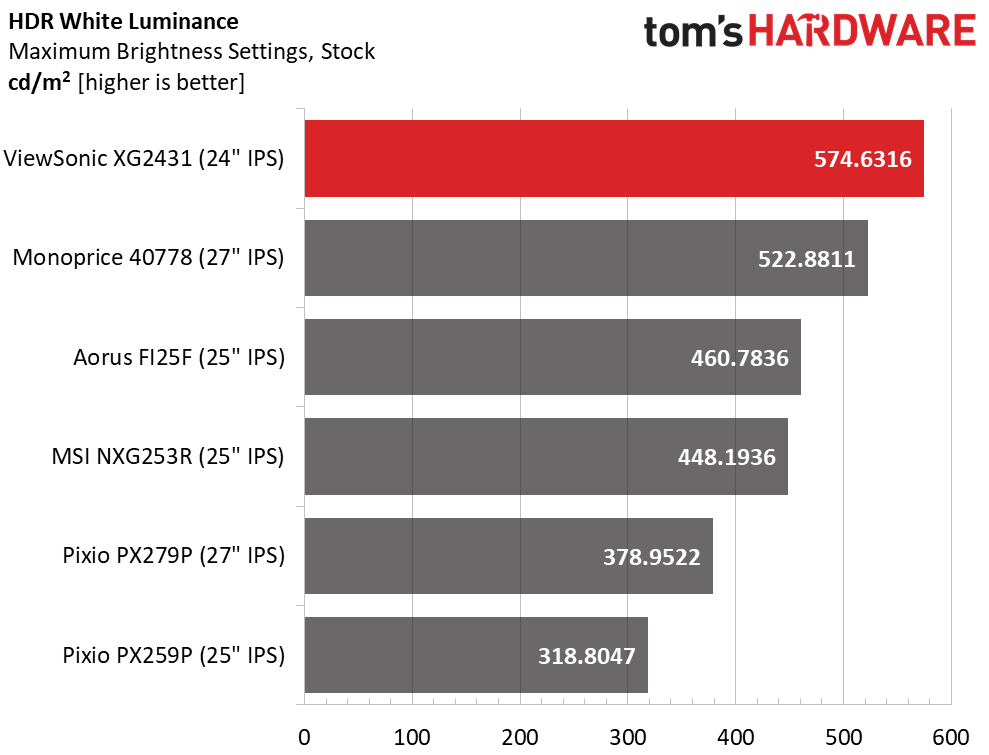
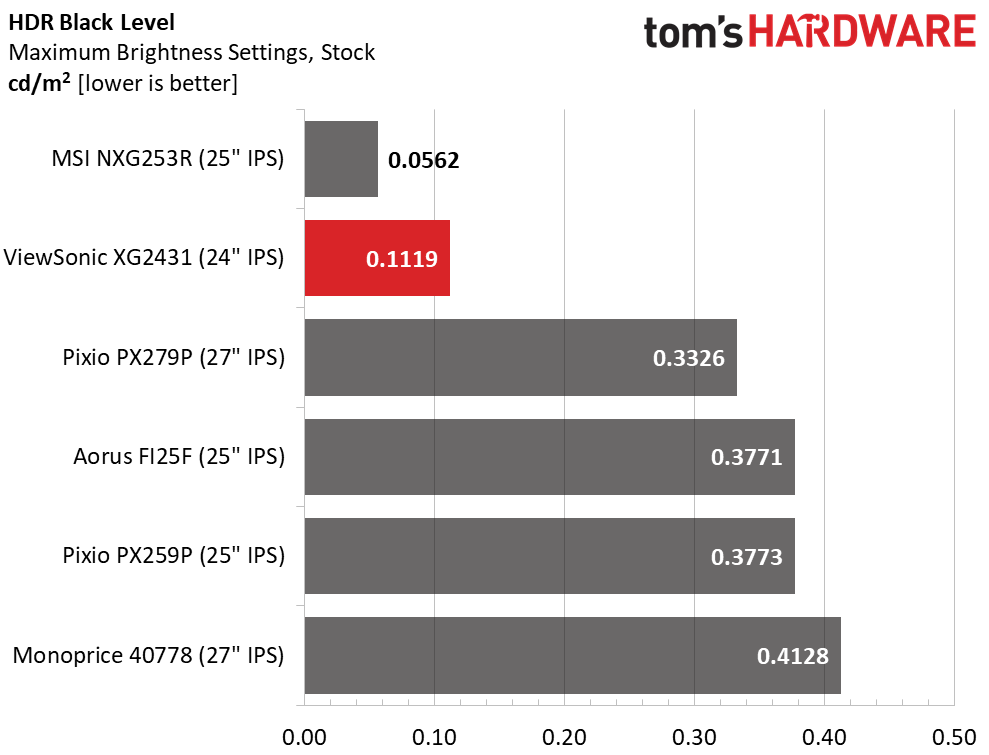
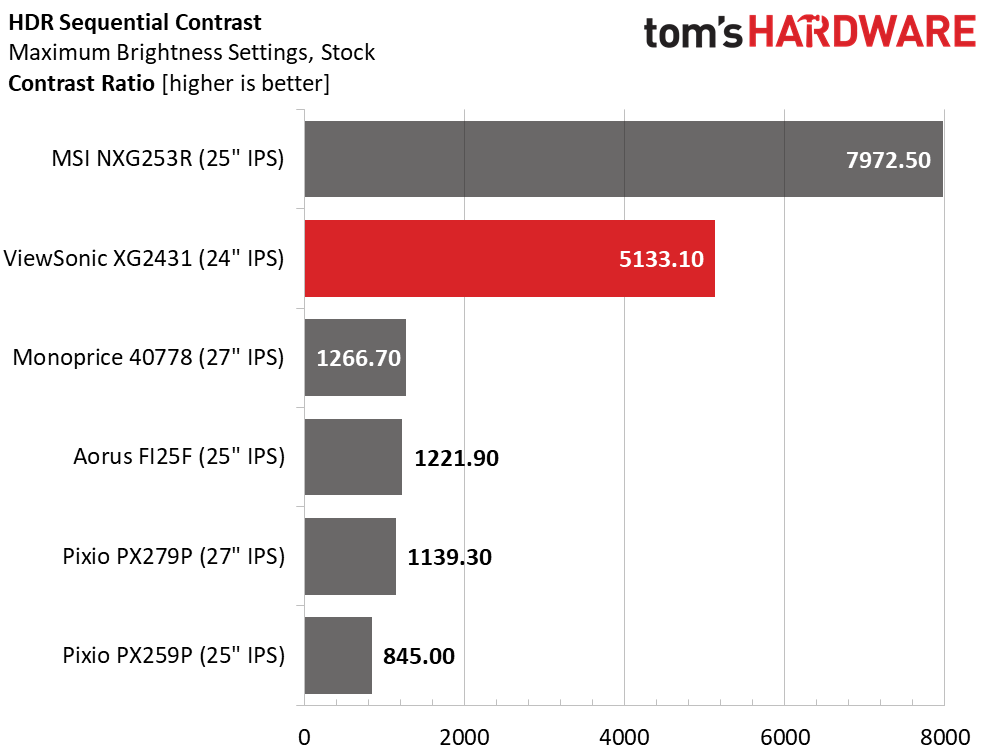
The XG2431 earns a DisplayHDR 400 certification, and my sample exceeded that with over 574 nits peak for a best-in-class finish. It further impressed with a very low 0.1119-nit black level taking the HDR contrast ratio to over 5133:1, second only to the MSI premium screen. For around $300, it doesn’t get much better. Most inexpensive monitors merely support HDR without exploiting it. The XG2431 is committed to excellent HDR image quality.
Grayscale, EOTF and Color
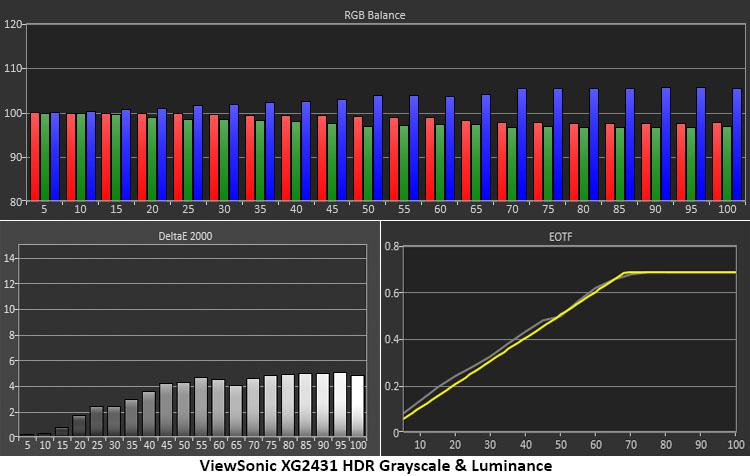
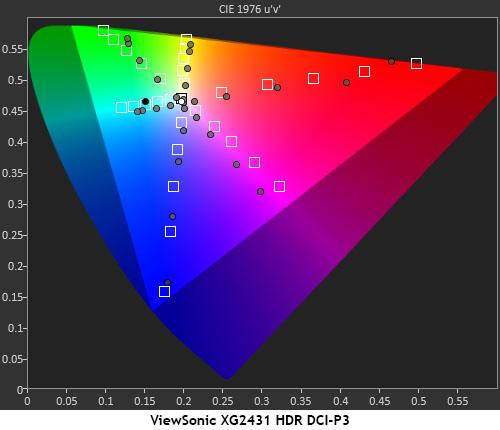
In the HDR color tests, the XG2431 showed a slight blue error in the grayscale run and near-perfect adherence to the EOTF reference with a tone-map transition point at 68%. While it would be nice to have RGB controls for HDR to make this even better, I can’t complain; the image looks great.
Nearly all HDR content is mastered in the DCI-P3 or Rec.2020 color spaces. Since the XG2531 is an sRGB panel, it must perform a bit of magic to enhance color. It does this by over-saturating the inner targets in a linear fashion. The over-saturation builds until the panel runs out of color, at which point, the red and green hues are adjusted to give a bit more punch. In practice, it works. HDR color looks more saturated than SDR even though there isn’t a wide gamut. The XG2431 is one of the better HDR monitors I’ve seen and one of the best for the money.
Get Tom's Hardware's best news and in-depth reviews, straight to your inbox.

Christian Eberle is a Contributing Editor for Tom's Hardware US. He's a veteran reviewer of A/V equipment, specializing in monitors. Christian began his obsession with tech when he built his first PC in 1991, a 286 running DOS 3.0 at a blazing 12MHz. In 2006, he undertook training from the Imaging Science Foundation in video calibration and testing and thus started a passion for precise imaging that persists to this day. He is also a professional musician with a degree from the New England Conservatory as a classical bassoonist which he used to good effect as a performer with the West Point Army Band from 1987 to 2013. He enjoys watching movies and listening to high-end audio in his custom-built home theater and can be seen riding trails near his home on a race-ready ICE VTX recumbent trike. Christian enjoys the endless summer in Florida where he lives with his wife and Chihuahua and plays with orchestras around the state.
-
Giroro Do any of these monitors support the ability to "Mirror flip" (reflect) the image. IE, so that that image and text will look normal when reflected in a mirror?Reply
I realized recently that neither Windows nor AMD graphics drivers support this feature, and it is extremely hard to figure out which monitors support it. It is one of those "impossible to google" questions, because "screen mirroring" has been defined by many companies to mean that copies of a single image are displayed on multiple displays at the same time. Also I'm yet to find a company with customer support that understands the difference between reflecting an image and rotating it.